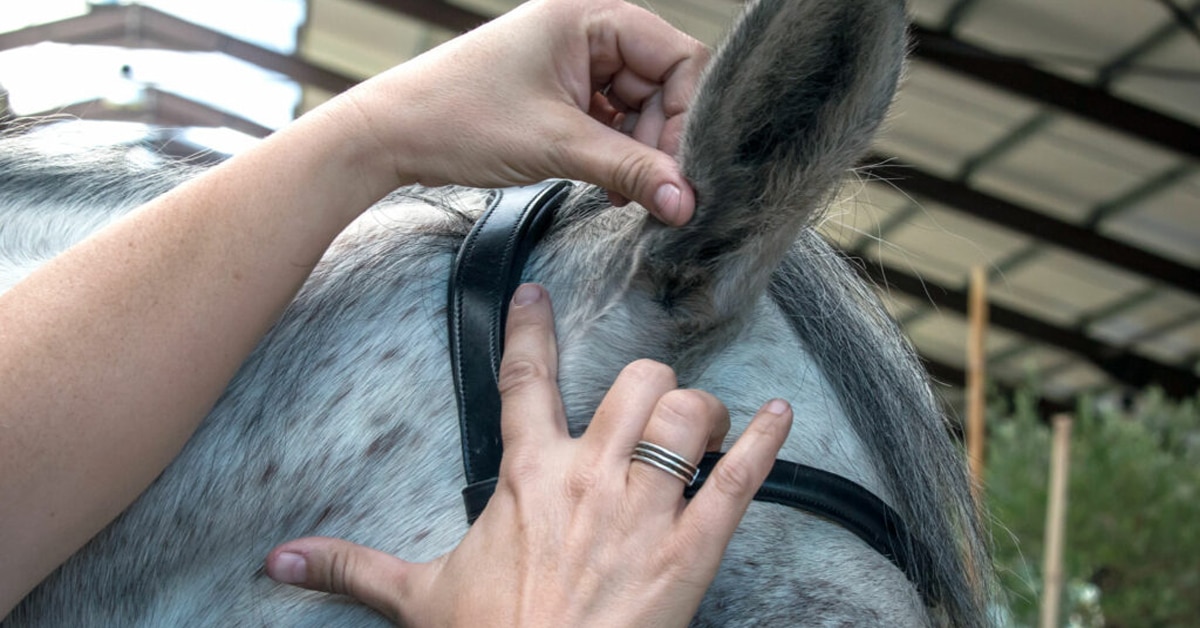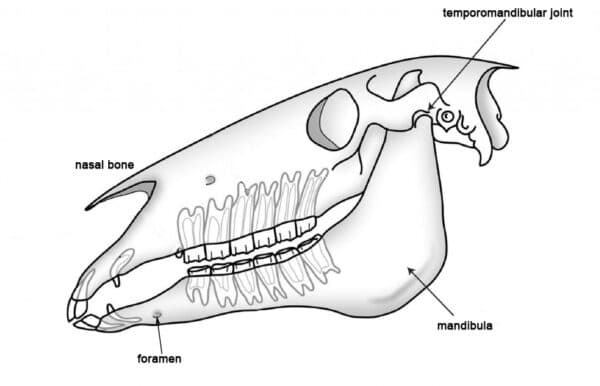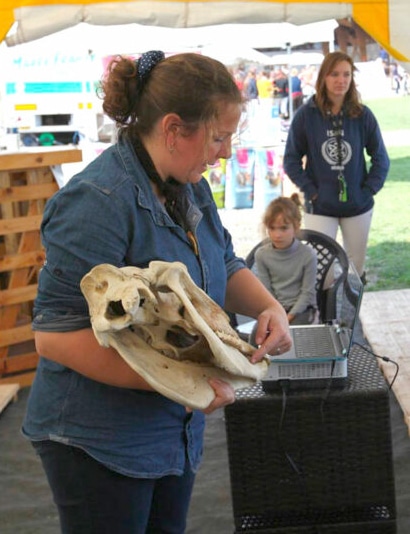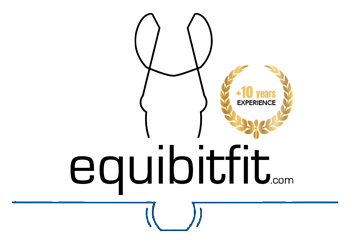
The headpiece/browband configuration can cause pressure and horse discomfort if not well-fitted to the horse’s head; even bitless bridles create a degee of poll pressure. (equibitfit.com photo)
By: Horse Sport staff | July 4, 2025
Belgium-based Géraldine Vandevenne began her career in equine dentistry after her own horse broke a tooth. She became an equine dentist and soon developed an interest in horse bits. Collaborating with bit and bridle fitters in Europe eventually led her to launch her own company, Equibitfit, which she has run for the past 12 years. Equibitfit offers bit and bridle consultations, as well as training courses in Belgium, France, and the Netherlands.
Excessive poll pressure in horses can cause discomfort, pain, resistance, and behavioral issues such as head-tossing, head-shyness, and difficulty with bridling. At the 2024 International Society for Equitation Science AGM, Vandevenne shared the results of a study she conducted measuring pressure on the poll — an important factor in bit and bridle fitting that influences both horse comfort and performance.
“Looking at the action of the bit and the bridle on the skull of the horse, we see a lot of pressure on the nose, on the mandibula [lower jawbone], on the foramens [paths for blood vessels and nerves to pass through], on the TMG [Temporomandibular Joint], but also on the poll [see diagram],” said Vandevenne. “If we have a look inside the mouth with the bit, we see pressure points on the tongue, on the bars, on the lips and on the palate. There are lot of studies about the action of the bit, the position of the bit in the horse’s mouth, noseband tightness, kinds of nosebands and rein tension, but fewer about the influence of the headpiece of the bridle on the biomechanics of the horse.”

Vandevenne described her research on ridden horses, which involved measuring pressure under the saddle, under the headpiece of the bridle, and using a rein tension monitoring system. Videos were also taken to observe any signs of pain or discomfort in the horses.
The study found considerable pressure on the poll area, along with tension in the nuchal ligament (which runs along the top of the neck) and heightened sensitivity around the ears. These results were observed in horses ridden in both shank bits and snaffles — and, surprisingly, also in bitless bridles.
Recognizing the growing popularity of bitless bridles, often perceived as a more humane option, Vandevenne noted, “Horse owners have to be aware that bitless bridles can also create pressure on the poll, which is really interesting.”
The design of the headpiece and browband also significantly affected horse comfort, as some configurations do not fit the horse’s head properly. The researchers identified several factors contributing to high poll pressure readings:
- Poor headpiece design
- Inadequate padding
- Overly-tight nosebands
- Improper saddle fit
 When asked about the connection between poor saddle fit and poll pressure, Vandevenne explained that pressure points under the saddle — particularly if more pronounced on one side — appeared to correspond with poll pressure under the crownpiece on the same side. This was noted whether the cause was poor saddle fit, rider imbalance, or horse asymmetry, though no definitive explanation for the phenomenon was provided.
When asked about the connection between poor saddle fit and poll pressure, Vandevenne explained that pressure points under the saddle — particularly if more pronounced on one side — appeared to correspond with poll pressure under the crownpiece on the same side. This was noted whether the cause was poor saddle fit, rider imbalance, or horse asymmetry, though no definitive explanation for the phenomenon was provided.
In her bit and bridle fitting work, Vandevenne observed that clients are generally more curious about the science behind using pressure mats to measure poll pressure than about rein tension data. “Most of them are afraid about rein tension measurements,” she said wryly.
While it’s widely understood that leverage bits such as pelhams, gags, Weymouths, and elevator bits cause considerable poll pressure, Vandevenne found that even a simple snaffle could be culpable. “I took measurements with snaffles without nosebands and just a strap headpiece, without a lot of tension on the reins,” Vandevenne explained. “Even without rein tension, we still saw peaks of pressure when the horse was trotting and cantering, so we also have the influence of the movement of the horse [on poll pressure], which is interesting. A lot of people think ‘I have really light hands.’ but we also have the action of the horse himself, so it’s a little bit about physics. Also, when we used a headpiece with padding, we saw the peaks [pressure] reduced, so it’s more comfortable for the horse.”
Original post : https://horsesport.com/magazine/tack-equipment/poll-pressure-bit-bridle-fitting/
